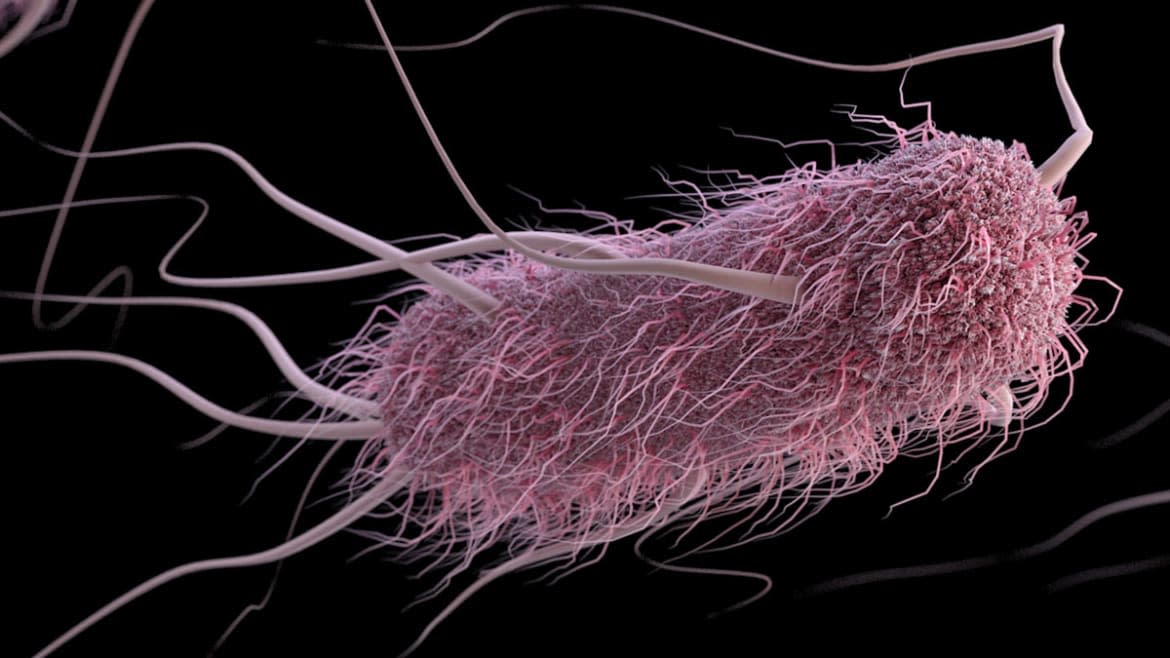Future Buildings Could Be Made From 3D Printed Microbes

The hype around 3D printing shows no signs of waning anytime soon, and for good reason: It’s a fast, inexpensive way to manufacture all kinds of different objects and structures, especially when conventional building materials are unavailable. A few scientists have a radical idea for what the next big leap in 3D printing could be: making things using living microbes.
Yes, it sounds weird as hell and not just a little creepy, but stay with us here. A group of researchers in the U.S. have just proved it's possible to create 3D printed structures using E. coli. These “living materials,” illustrated in a new Nature Communications paper, could pave a path for more sustainable construction of objects that could also be programmed to help improve people’s health or remove toxins from the environment.
“Our group has always been interested in engineering biology to make materials,” Northeastern University chemist and study co-author Neel Joshi told The Daily Beast. “In the same way that a seed has a set of genetic instructions to produce a tree, we want to provide biological cells with a set of genetic instructions that program them to make material structures with prescribed properties.”
Can 3D Printed Homes Solve the Urban Housing Crisis?
In normal 3D printing, a printer is loaded with some kind of “ink” and creates a three-dimensional object by printing layer after layer of the ink until the object is finished. 3D bioprinting is similar, but the ink that's used to make these materials consists of living cells that can organize into solid structures. These “bioinks,” MIT engineer and study co-author Avinash Manjula-Basavanna told The Daily Beast, can be found in nature in materials like silk and plant cellulose. But scientists are interested in making their own bioinks, because the cells could be designed to sense the environment and react accordingly.
Bioprinting is already used in certain facets of medicine like creating artificial tissue to replace damaged ones, but this is one of the first times bioprinting has been accomplished using only microbes.
“We created this bioink purely from engineered E. coli,” said Joshi. “We did this by using genetic engineering to control the mechanical properties” of the bioink, like stiffness and viscosity—something that had never before been done.
The team modified E. coli to produce a protein called fibrin, which helps form blood clots in mammals. This new E. coli was turned into a bioink that produced fibrin nanofibers that could concentrate into solid 3D structures when 3D printed.

Structures 3D printed by the bioink. The scale bar is equivalent to 1mm.
As part of the study, the team used this E. coli-derived bioink to print out small structures several millimeters in height and length—nothing huge, but enough to prove out that this ink can actually produce a viable, stable shape.
Further testing also found that when the bioink is combined with other kinds of engineered microbes, it led to materials that are able to release an anticancer drug called azurin; sequester toxic chemicals like Bisphenol A (BPA); and regulate the growth of other living cells.
Based on the results, the biggest potential application from this new bioink is probably in biomedical devices that could improve the treatment of cancer. But there are clearly many other benefits that are worth exploring. Joshi said he thinks the bioink could be scaled up and perhaps combined with other components to create larger, more sturdy architectures—perhaps even parts of whole buildings.
That’s a pretty wild idea, but the authors of the new study wouldn’t be the first group to ponder whether it's possible to live in a building made of living things. NASA is already looking into whether fungus could be the key to building homes on the moon and Mars. Joshi doesn’t rule out that perhaps bacterial ink could do the same thing.
Got a tip? Send it to The Daily Beast here
Get our top stories in your inbox every day. Sign up now!
Daily Beast Membership: Beast Inside goes deeper on the stories that matter to you. Learn more.

